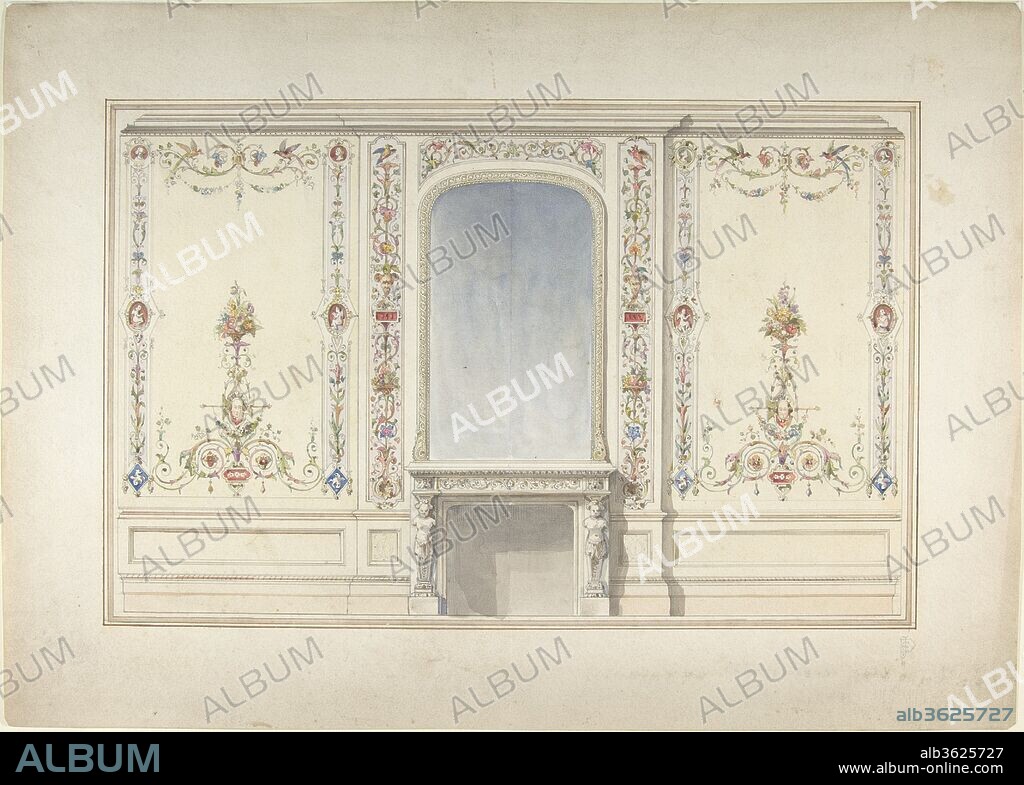alb3625727
Elevation of Fireplace Wall in an Elizabethan Revival Room

|
Add to another lightbox |
|
Add to another lightbox |



Buy this image.
Select the use:

Title:
Elevation of Fireplace Wall in an Elizabethan Revival Room
Caption:
Elevation of Fireplace Wall in an Elizabethan Revival Room. Designer: John Dibblee Crace (British, London 1838-1919 London). Dimensions: sheet: 12 5/8 x 17 5/8 in. (32.1 x 44.7 cm). Date: ca. 1870-90.
John Dibblee Crace was born into a long line of interior decorators. His ancestors Edward and Frederic Crace (British, 1725-1799; 1779-1825) had been responsible for the decoration of the Royal Pavilion in Brighton for King George III. His own father, John Gregory Crace (1809-1889), continued their family business and had also been partner to Augustus W.N. Pugin (British, London 1812-1852 Ramsgate). By the time John became an architect, historic period styles were in high demand and John catered to that market with great success, designing some of the most celebrated period rooms in Great Britain. At the height of the Crace firm's activity in the 1870s, they employed over a 100 regular employees. In the last quarter of the century success waned however and John Dibblee Crace closed the firm in 1899.
Technique/material:
Pen and black and brown ink, watercolor over graphite
Museum:
Metropolitan Museum of Art, New York, USA
Credit:
Album / Metropolitan Museum of Art, NY
Releases:
Model: No - Property: No
Rights questions?
Rights questions?
Image size:
4266 x 3049 px | 37.2 MB
Print size:
36.1 x 25.8 cm | 14.2 x 10.2 in (300 dpi)
 Pinterest
Pinterest Twitter
Twitter Facebook
Facebook Copy link
Copy link Email
Email
